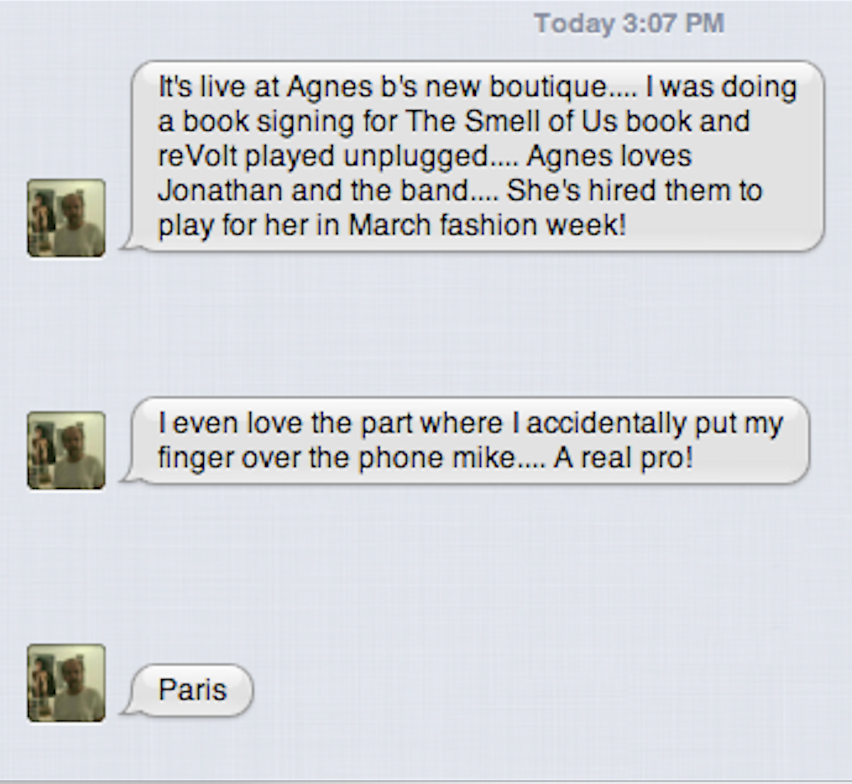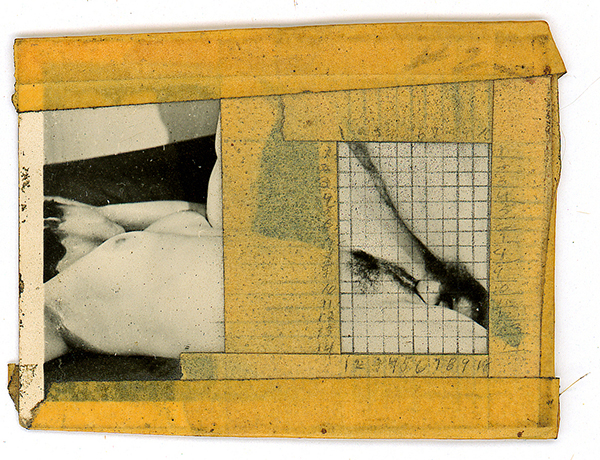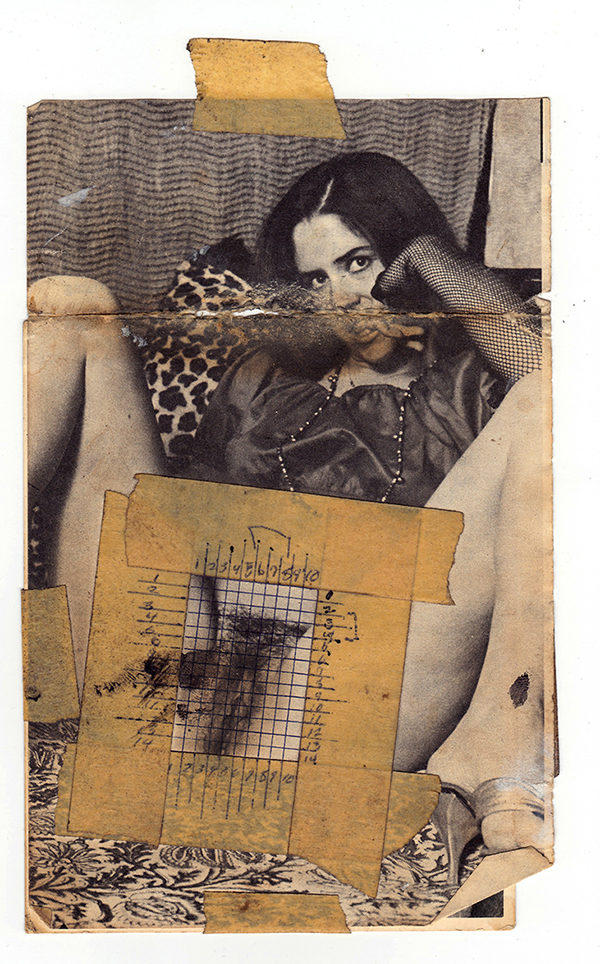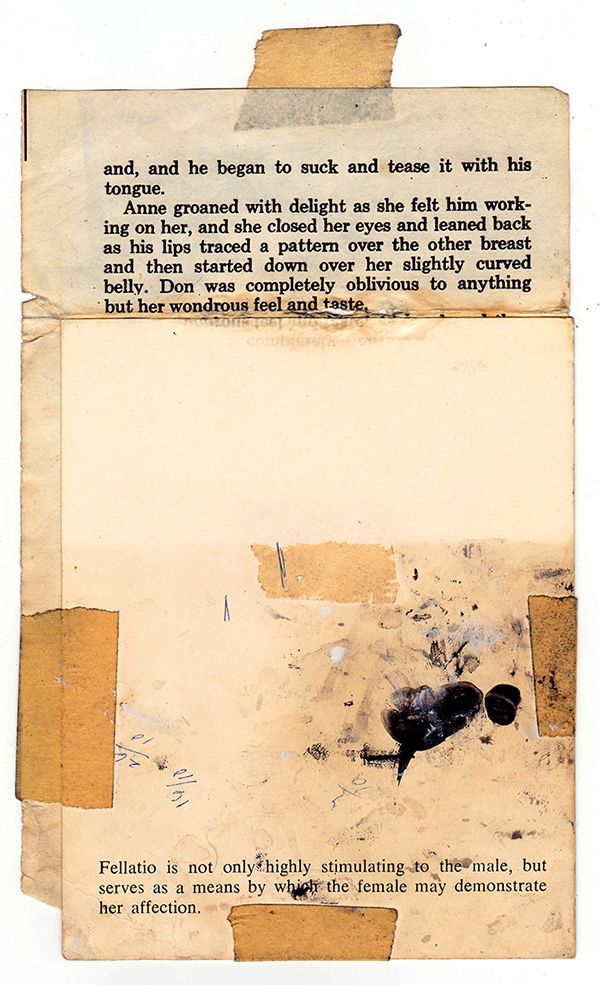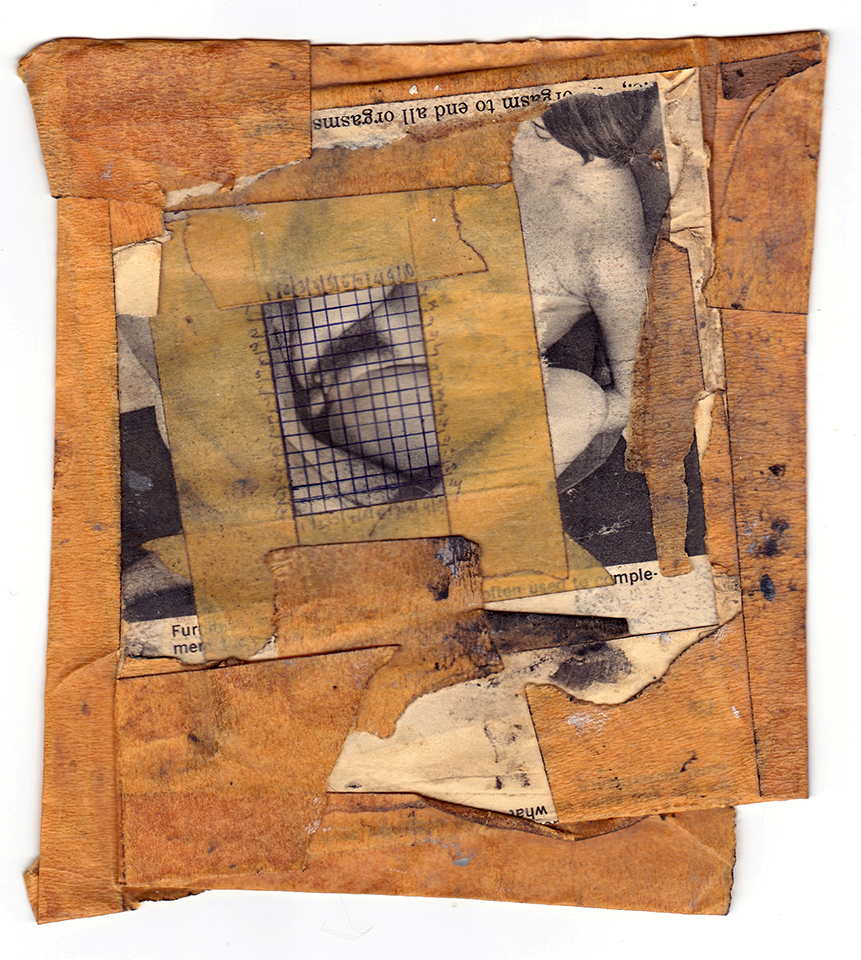SATIRE INSPIRED BY WISHFUL THINKING, THE CULTURE WARS, AND THE LEFT’S [SHE]NANIGANS
For a time in the States, growing criticism of liberal culture’s strident agenda offered signs that the left was quivering, getting grayer, loosing its grip, starting to shrink, beginning to molder and leak. For example, the death of the Marxist theorist Jacques Derrida, on October 8, 2004, provoked an astounding revisionist article: “The Theory of Everything, R.I.P.,” by Emily Eakin, published in The New York Times (October 17, 2004). Several of Derrida’s contemporaries and acolytes admitted to Ms. Eakin, that they had hoped and believed their “theories” would foster a Marxist revolution in the West (amazing!). This admission backdated to the beginning of the 1990’s (no doubt Christmas Day, December 25, 1991, when Gorbachev declared the Soviet Union extinct), their disavowal of, and distancing from, Derrida, and the various flavors of revolution he and they were cultivating in their dreams and classrooms. The article had the effect of highlighting these academics’ hypocrisy, and the fact that theory had failed as an effective anti-capitalist, anti-American weapon. I thought: How much further up their ass could these schmucks possibly shove their heads?
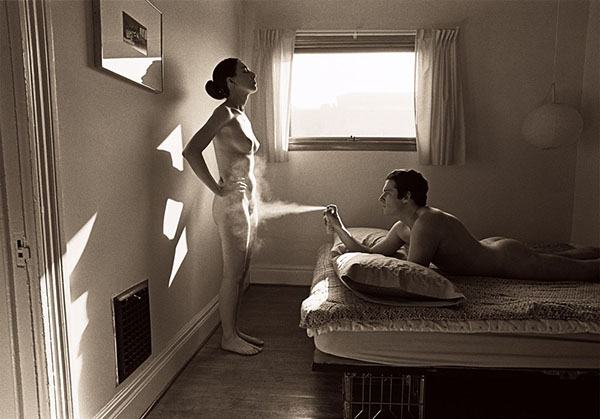
PERFORMING AEROSOL FICTION, Buffalo, New York, 1968
In 1978, I was the “featured photographer” at the national convention of the Society for Photographic Education—an academic organization consisting of leftist college photography teachers, which then most closely resembled the Comintern. Two years later, my work was the target of ad hominem, pre-Borkian, libelous attack by radical anti-porn feminists, published in multiple issues of Exposure—the Society for Photographic Education’s “learned” journal, sent to most every college photography program, curator of photography, and collector, in the United States.
Around the same time, Franklin Furnace, a New York City based feminist collective milking the system for grants to collect and advocate for artist books, mailed an unsolicited library index card bearing my name, to hundreds of public and university libraries in this country. The card listed some of my publications, along with a quote attributed to me, stating I thought my work was “shit.” (This defamation was settled out of court.) Activist liberal “educators,” and straight-up psychopaths, began to attack my pictures with the clear intent of causing me as much harm as possible.
By the end of Jimmy Carter’s Presidency, in 1981, as the interest rate for a home mortgage inched above a hernia-inducing 21%, I had, for over a decade, been making satirical pictures inspired by leftist ideas of questionable merit. My own politics were an admixture of moderate Republican and quasi-libertarian notions—it was a free country, and my zealous, lefty-liberal colleagues were supposed to be tolerant of all views. I liked Lenny Bruce’s idea that a truly religious man had only one suit.
With increasing frequency, moderate views were attacked by kangaroo courts springing up willy-nilly in liberal academe. These activists were devoted to what would become known as “political correctness.” Their ideas had germinated at elite colleges and women’s studies programs, byproducts of dubious disciplines and experiments in affirmative action. Sight, for example, was criminalized (ever hear of “Lookism”?), as well as male dating conduct (codified dating rules, with academic “courts” manned by devotees of Andrea Dworkin, enforced judgments with totalitarian, steel-fisted zeal). Trendy theory would eventually spawn a hodgepodge of wackiness, which had the effect of spreading political correctness throughout academe.
I taught photography at an “urban” college, held the rank of professor, and was tenured. I loved making photographs, exhibited my pictures internationally, and believed I lived in a free country. By 1982, I’d sold hundreds of pictures, owned a winter and a summer Porsche, and, at 40, had just purchased my first house—a 16-room fixer-upper (my darkroom was as big as the apartment in Brooklyn in which I’d grown up). Life now was far from tough.
However, I found my pictures and job under continual attack. I adopted George Herbert’s notion, deciding that living well would be the best revenge. The left controlled the arts and humanities in academe. Dissociating myself from the S.P.E. seemed prudent. Much like Br’er Rabbit after he’d been tossed into the brier patch, I’d live as comfortably as possibly among academe’s flaccid thorns.
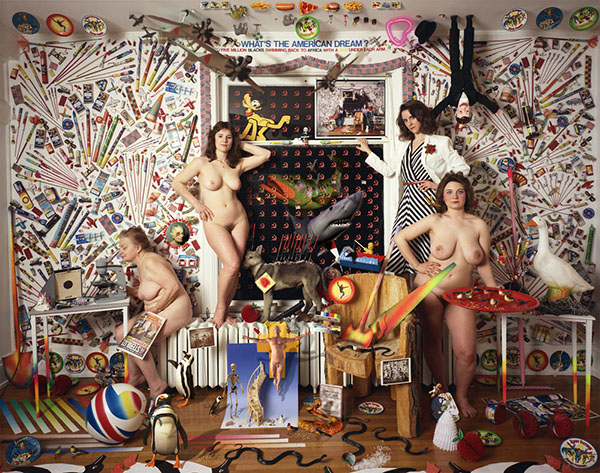
MARXIST VIEW; BARK ART; ART BARK (FOR ART PARK); MADAM CURIOUS; A CHINESE ENTERTAINMENT; IRVING’S PENS; SOMETHING TO LOOK AT SPOTTING UPSIDE DOWN; HOLLIS’S HERSHEYS; AND FOUR WOMEN POSING, 1985/2001
Since the early 1980’s—my free speech protected by tenure, and the Constitution of the United States—I’ve inhabited a gobbledygook-free zone. I enjoy the knowledge that my pictures changed the practice of art-photography. In the ‘90s, I enthusiastically embraced Photoshop, computers, scanners, and ink jet printing. This new technology enabled the most productive period of my life. I steer clear of delusional malcontents.
An epilog: The deceased radical-feminist-activist, Andrea Dworkin, excreted hateful aphorisms: “Heterosexual intercourse is the pure, formalized expression of contempt for women’s bodies;” “Romance is rape embellished with meaningful looks;” and “The only good man is a dead man.” (Francois de La Rochefoucald said: ‘Hypocrisy is the homage vice pays to virtue.’) In a June 6th, 2005, New York Magazine article, titled, “The Prisoner of Sex,” Ariel Levy, its self-proclaimed feminist author, offered the upshot for Dworkin and her “movement”—the radical movement behind the attacks on my pictures. “With the possible exception of the Shakers, it is difficult to think of an American movement that has failed more spectacularly than anti-pornography feminism.” Pornography is now, “…a source of inspiration for all of popular culture.”
I deplore pornography; and am not a prude. I believe Ms. Levy’s assessment of Dworkin’s failed ideology is correct. However, only a misguided, double-tracking New York liberal would characterize pornography as “a source of inspiration.” The only thing pornography seems to inspire is masturbation.
While supporting Dworkin’s agitprop, liberal print media discovered that porn’s sensationalism attracted a larger audience. The prospect of larger audiences, and increased profits, quickly modified media’s hack formula: If it bleeds it leads. All manner of tits, ass, vile language, and retarded behavior have been added to the fires, floods, and mayhem broadcast and published daily as entertainment.
Photography was politicized in the 1930s, and used by the left to promote social engineering and attack capitalism. I thought photography could be other than propaganda inspired by Socialist Realist art. This might not have occurred to me if I’d studied with activist teachers who man (or wofem) photography’s collegiate barricades, and indoctrinate future activist photographers. By the mid-1960s, the millions of photographs made of ghettos and wars had failed to bring about a Marxist revolution in America, or change much. Serious photography, narrowly defined by a handful of powerful leftist curators, picture editors, and critics had devolved into the intractably moribund, the terminally tedious. In contrast, other areas of art were experiencing -ism after -ism of “innovation.” In the 1950’s, New York City had become the center of the art world. But by 1968, the Witkin Gallery was the only gallery in New York City devoted to showing photography. Art galleries and many artists did not consider photography to be art. This has changed in the last 40 years.
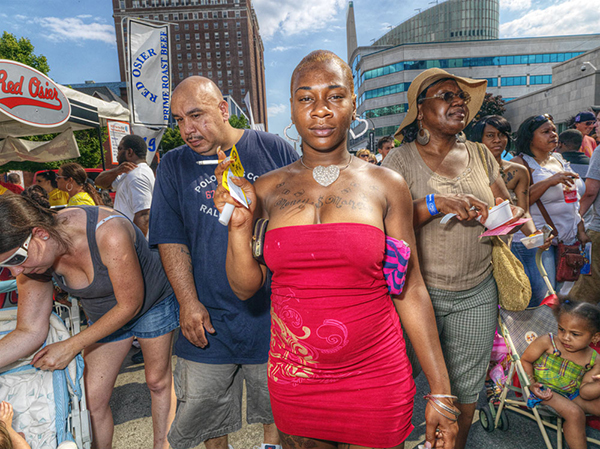
MONEY $ MAKER[S]. TASTE OF BUFFALO, SATURDAY, JULY 9, 2011

WOMAN WITH THE LETTERS “F” “U” “C” “K” TATTOOED ON THE FINGERS OF HER RIGHT HAND, RIDING A BUCKING MECHANICAL CHICKEN WING. NATIONAL BUFFALO WING FESTIVAL (”WINGFEST”) 2013, COCA-COLA FIELD, BUFFALO, NEW YORK, SEPTEMBER 1, 2013.
Fractured fairy tale (a phrase coined for certain Hanna-Barbera cartoons), and allegory are equally apt terms to use to describe some of my pictures. Early on, it seemed important to underscore the illusion, the “fiction,” which is the photographic image. I fused photography with the plebeian character of conceptual art’s subjects, materials, and methods, to shape my working methods. Satirizing leftist practice in photography eventually marginalized “activist” photographers complicit in corrupting and ghettoizing photography, making room for other manner of expression.
Digital equipment was ten times costlier ten years ago. At one-tenth the price, it’s now many times as good. “Workers” can now afford and own the means of production. A student can make technically perfect photographic images and prints with a few weeks of training. The affordability and environment for making photography is as close to a workers’ paradise as things can get. Capitalism, not communism, made this possible.
Making visually and intellectually entertaining pictures, unconstrained by what’s now euphemistically called progressive ideology appealed to me—it was certainly the less traveled path in the mid-1960s. William Hogarth’s art, William F. Buckley’s artful needling of “crypto-fascists,” and Tom Wolfe’s shrewd assessments of the art world helped to nourish and hone my art—helped me to make sense of what I experienced. The pictures in this selection are often sampled from larger sets of pictures (e.g., “A Trick for Man Ray,” is from a portfolio of 19 photographs called “Idiosyncratic Pictures,”), or are single-image works, without siblings. Some fabrications are simple, some complicated (“A Marxist View,” for example, took over a year of adjusting and testing; “Les Krims Performing Aerosol Fiction,” was made in an afternoon). Simple is not inherently better than complex.
Entertained by Ansel Adams’ analogy of printing a negative to interpreting a musical score, some older images are now perfected or reinterpreted using Photoshop. “Candid” pictures are all altered digitally. It’s been my practice to “spin” pictures with “titles.” These can take the form of short stories or rants, in effect creating transparently propagandistic work, meant to conjure standard, liberal, media practice.
“Satire Inspired by Wishful Thinking, the Culture Wars, and the Left’s [She]nanigans,” is an apt banner for this selection, and for the times in which these pictures were made.
Les Krims,
September 8, 2010 (Edited: 12.11.2014)
—
Les Krims was born in 1942, in New York City. He lives in Buffalo, New York. Selected recent solo shows include LES KRIMS, PARIS PHOTO, Paci Contemporary exhibition at Paris Photo, Paris, France (2014); DESECRATOR, Paola Meliga Galleria d’Arte, Torino, Italy (2013); LES KRIMS: SATIRE INSPIRED BY WISHFUL THINKING, THE CULTURE WARS, AND THE LEFT’S [SHE]NANIGANS, ARTISANworks, Rochester, New York (2010); LES KRIMS, Galerie Serge Aboukrat, for the publication of a 15 print, original print portfolio, of a selection of pictures from FICTCRYPTOKRIMSOGRAPHS, published by Chez Higgins, Paris, France (2008); AMERICA NUDE, Galeria PaceArte Contemporaena, Brescia, Italy, December (2007); LES KRIMS, WISHFUL THINKING: SATIRE INSPIRED BY THE DECLINE OF THE LEFT IN AMERICA, Galerie Baudoin Lebon, Paris, France (2007). Recent group shows include BLACK FOREST, Candela Gallery, Richmond, Virginia (2014); TRANSFORMATIONAL IMAGEMAKING: HANDMADE PHOTOGRAPHY SINCE 1960, CEPA Gallery, Buffalo, New York (2014); AMERICA ’70-LA FOTOGRAFIA TRA SOGNO E REALTÀ, Paci Contemporary, Brescia, Italy (2014); 3X1 NON SOLO FOTOGRAFIA, Paci contemporary, Brescia, Italy (2013); THE POLAROID YEARS: INSTANT PHOTOGRAPHY AND EXPERIMENTATION, The Frances Lehman Loeb Art Center, Vassar College, Poughkeepsie, New York (2013); IT CAME FROM THE VAULT: RARELY SEEN WORKS FROM MAG’S COLLECTION, Memorial Art Gallery, Rochester, New York (2013); WHEN COLLECTING WAS NEW: PHOTOGRAPHS FROM THE ROBERT A. TAUB COLLECTION, The Art Institute of Chicago, Chicago, Illinois (2013); 50@50 SELECT ARTISTS FROM THE GERALD MEAD COLLECTION, University at Buffalo Anderson Gallery, Buffalo, New York, August (2012); FLESH AND BONE, PHOTOGRAPHY AND THE BODY, The Portland Art Museum, Portland, Oregon (2012).
www.leskrims.com

